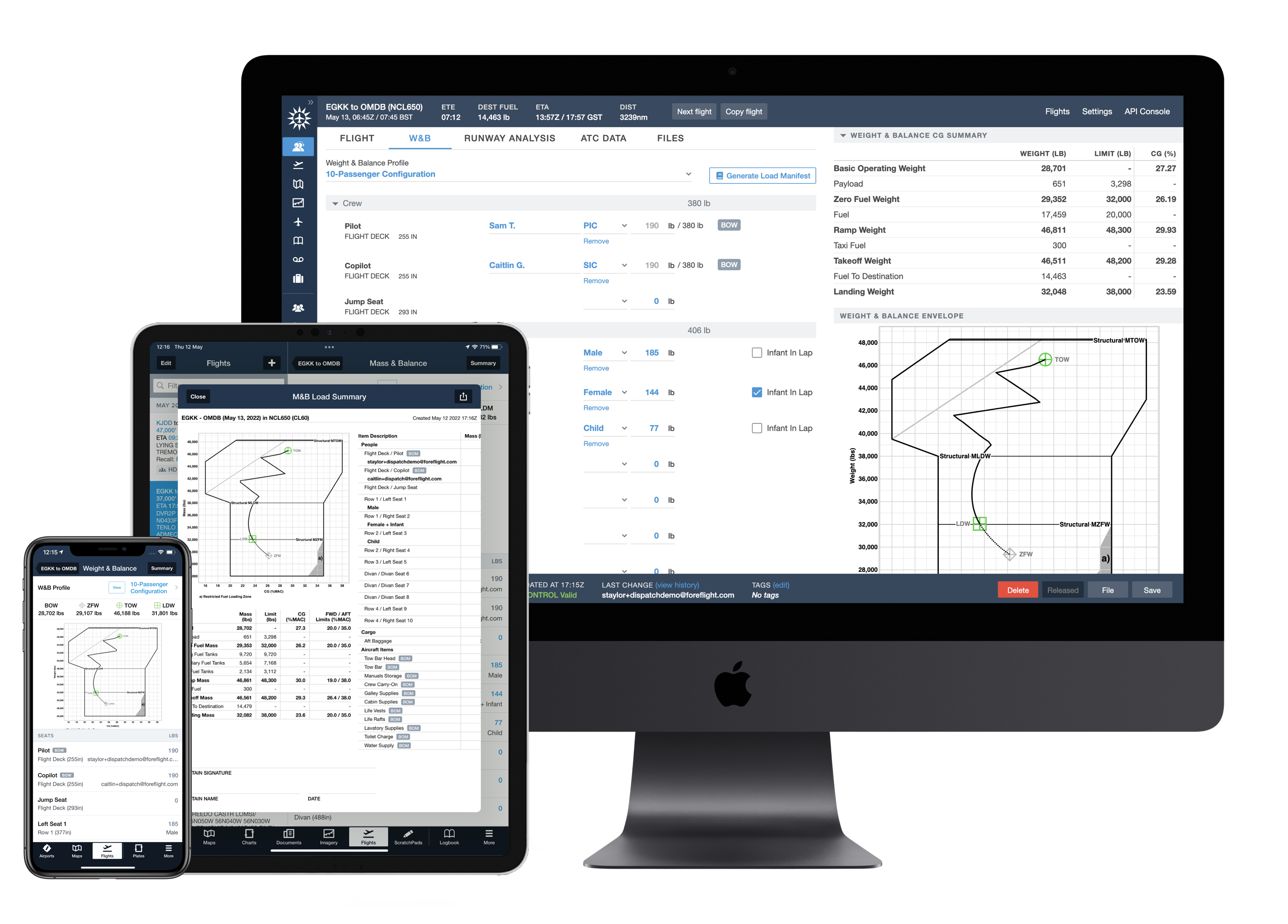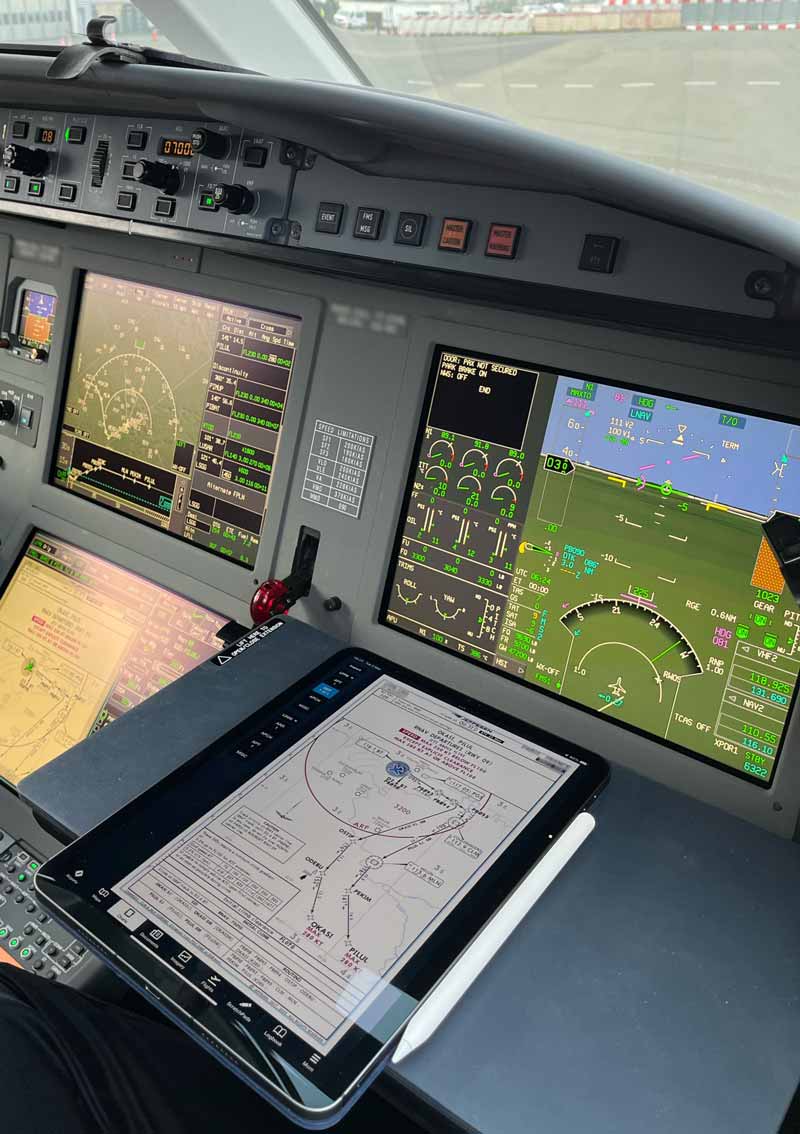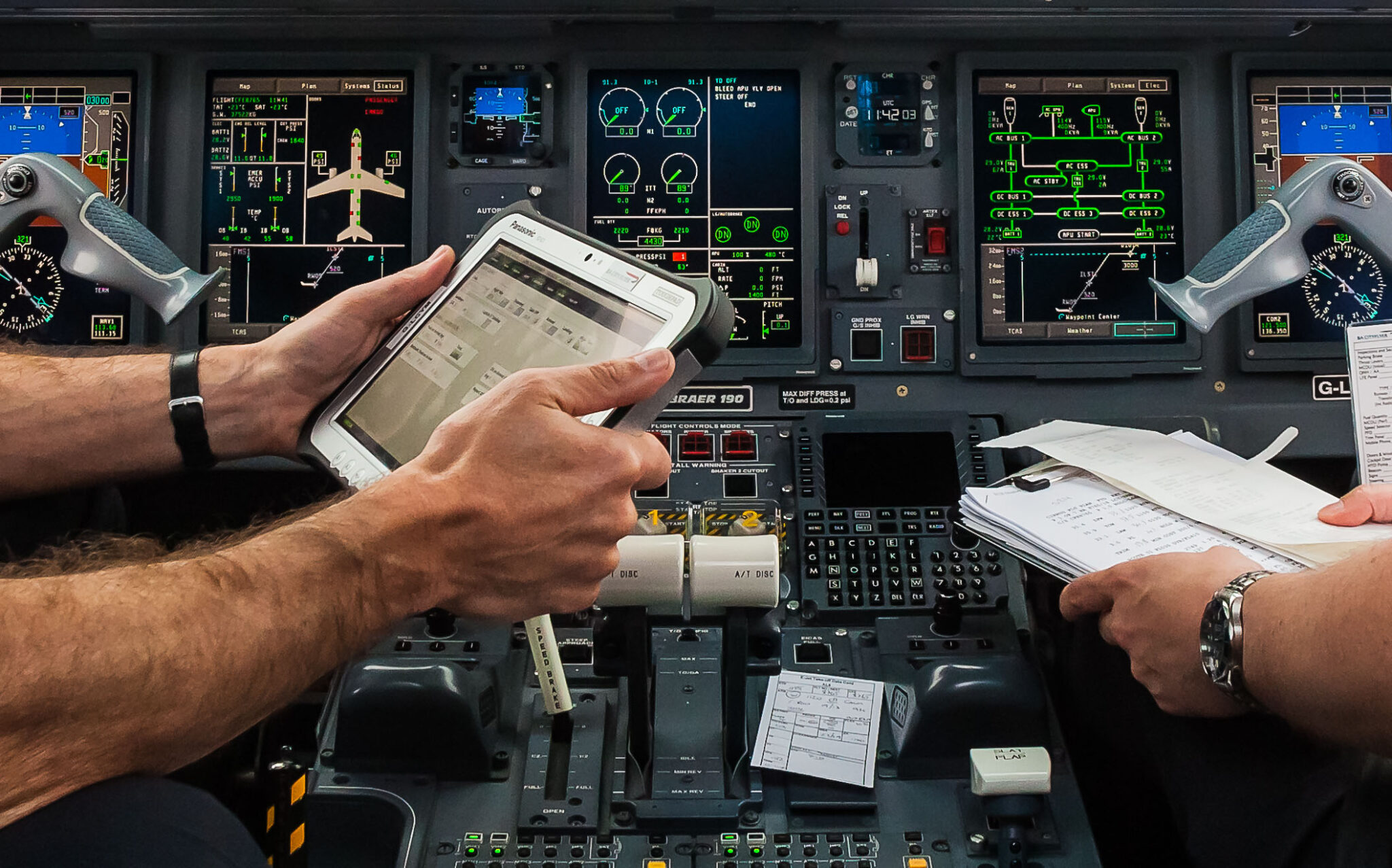What is an Electronic Technical Log?
7 June 2023
With the constant evolution in the aviation industry, digital solutions like the Electronic Technical Log (ETL) are taking centre stage in streamlining processes and improving overall efficiency.
What is Aircraft Technical Log or Paper Tech Log?
At the heart of an aircraft's operation lies a significant piece of documentation – the Aircraft Technical Log (ATL). This Paper Technical Log, as stipulated by the European Union Aviation Safety Agency (EASA) M.A.306 and National Aviation Authority (NAA) regulations, is a comprehensive record system which documents an aircraft's operational and technical activity.

The ATL or paper Log is a comprehensive record system that combines the aircraft utilisation fields included in the Journey Log (outlined in ICAO Annex 6 Part I, 11.4, and also EASA ORO.MLR.110), with Certification and Maintenance records. This compilation of information grants all relevant entities full awareness of the current operational and airworthiness status of the aircraft.
The Elements of Aircraft Tech Log
The ATL is underpinned by three elements - maintenance and repair information, flight information, and operational information.
Maintenance and Repair Information
This component of the ATL contains thorough records of all maintenance and repair work performed on the aircraft. It spans scheduled maintenance, unscheduled repairs, and component replacements. In addition to this, any defects or issues identified during ground or flight operations are meticulously recorded. As a result, the current status of the aircraft is transparently communicated, ensuring the maintenance teams are always informed and prepared.
Flight Information
The ATL also records essential flight data, which includes departure and arrival times, flight duration, flight origin and destination, and fuel consumption. Having these details at hand facilitates efficient planning and management of the fleet. It also helps monitor fuel efficiency and optimise flight routes, thereby reducing operational costs and minimising the environmental footprint.
Operational Information
The ATL logs operational data, including information about the crew and operation types. It also notes any incidents or anomalies that may have occurred. This data can be crucial for evaluating crew performance, refining operational processes, and learning from any unforeseen situations or anomalies.
At Luxaviation Group, we place great emphasis on comprehensive record-keeping. While we have transitioned to Management/Maintenance Information Systems (MIS) like FlightAware, Centrik, Jeppesen, and CAMP for a large part of our records, the traditional paper format of ATL still finds its place in our operations.
Shifting From ATL to ETL
However, the landscape of record-keeping is evolving. With advances in technology, a computerised or hybrid version of ATL is envisioned in the regulations (refer to AMC1 ORO.MLR.110, AMC M.A.306(b), or AC 120-78A). This hints at a potential shift from paper ATL to Electronic Technical Logs (ETL), a digital solution that promises enhanced efficiency and accuracy.
Historically, ATLs were maintained in a paper format. This age-old method, however, is not without its pitfalls, giving rise to various complications in terms of efficiency, accuracy, and cost-effectiveness. Thus, as part of the digitalisation wave, ATLs are undergoing a transformative journey leading to the creation of their digital counterparts – the ETLs.
What is an Electronic Technical Log?
An ETL is the digital avatar of the traditional ATL. This digital solution encompasses records of routine maintenance, repair works, and crucial flight information like departure and arrival times, fuel consumption, flight duration, and the flight's origin and destination. Furthermore, it provides a detailed account of operational information such as crew details and any incidents that may occur.
ETL is seen as a vital upgrade, crafted to enhance the communication link between the flight crew, the Continuing Airworthiness Management Organisation (CAMO), and the Maintenance Teams. This shift towards ETL aligns with initiatives like the IATA PAO:TO - Paperless Aircraft Operations in Technical Operations that advocate for a paperless future.

The Benefits of Electronic Tech Logs in Aviation
The transition from ATLs to ETLs is not without its merits. This digital solution offers a plethora of benefits, significantly improving efficiency, data accuracy, safety, and cost-effectiveness.

Boosting Operational Efficiency
ETLs are engineered to supercharge operational processes, offering real-time updates on the aircraft's status. This proactive approach enables Maintenance Teams to swiftly identify and resolve issues, reducing delays, and minimising downtime. In addition, ETLs' integration with other aviation systems such as aircraft maintenance software, flight operations software, and scheduling software allows for superior fleet management, decreased maintenance costs, and enhanced aircraft performance.
A real-time digital solution like ETL reduces the chance of miscommunication and lost documents, allowing for the smoother transmission of critical information. The immediate accessibility of data ensures timely decision-making, optimising overall operational efficiency.
Promoting Data Accuracy
With the transition to ETLs, we bid adieu to manual record-keeping, which can often be error-prone. The digital platform standardises the data recording process, ensuring accuracy and consistency. Furthermore, pilots and maintenance personnel can easily access ETLs through tablets or mobile devices, ensuring all maintenance and operational data are logged accurately.
The automated nature of ETLs eliminates the chance for human error, which can occur in handwriting or manual data entry. This reduces the risk of misinterpretation or loss of information, making the overall data more reliable and accurate.
Ensuring Safety
ETLs play a crucial role in improving safety by enabling the timely and precise recording of maintenance information. Any irregularities or issues can be detected promptly, allowing immediate rectification. This can significantly minimise the risk of operational hazards, ensuring the safety of the crew and passengers.
Streamlining Costs
Shifting from traditional paper-based ATLs to ETLs can significantly reduce operational costs. ETLs eliminate expenses related to paper, storage, and manual data entry. Furthermore, the minimisation of aircraft downtime and maintenance delays can lead to substantial cost savings.
How Electronic Logbook Aligns With Luxaviation Group's Core Values
The integration of Electronic Technical Logs (ETLs) into aviation operations is a significant move towards digital transformation. At Luxaviation Group, this transition translates into direct enhancements across our five core values - Customer Focus, Communication, Safety, Quality, and Responsibility.
Customer Focus
The implementation of ETLs is an essential step in optimising our service delivery. ETLs streamline workflow and facilitate a smoother aircraft transfer process, leading to improved efficiency. With these systems, we are equipped to expedite procedures while maintaining accuracy, resulting in an enhanced service experience for our clients.

Communication
ETLs contribute substantially to our commitment towards effective communication. These systems enhance data accuracy and facilitate real-time information sharing across all entities. The resultant improvement in the exchange of information can facilitate more synchronised operations and quicker procedures, promoting an overall elevation in our operational communication.
Safety
In an industry where safety is non-negotiable, the role of ETLs is paramount. They remove the variable of handwriting, thereby minimising the risk of misinterpretation or errors that could affect safety. ETLs also contribute to improved crew awareness by offering accurate, real-time information, thereby bolstering our safety measures.
Quality
The integration of ETLs aligns with our ongoing efforts to deliver high-quality services. By reducing transactional rates and decreasing errors, ETLs ensure that our operations continue to meet the exacting standards we have established. This shift not only embraces technological advancement but also contributes directly to the quality of our service.
Responsibility
Luxaviation's definition of responsibility includes our stewardship of the environment. The transition to ETLs allows us to significantly lessen our dependence on paper, eliminating the need for printing and associated waste. This step reaffirms our commitment to sustainable practices, highlighting our intent to utilise technology in the interest of environmental responsibility.
Challenges to the Implementation of Electronic Tech Logs
While the digital transformation journey towards Electronic Technical Logs (ETLs) offers immense potential benefits for aviation operations, it also presents its fair share of challenges. Understanding these challenges is the first step in formulating effective strategies to mitigate them, ensuring a successful transition to this digital system.
Implementation Complexity
The transition to ETLs is not a simple plug-and-play process. It entails a significant investment of time and resources, requiring an in-depth understanding of both the existing operational infrastructure and the intricacies of the ETL system. A strategic approach that prioritises gradual integration over an abrupt shift can help manage this complexity and streamline the implementation process.
Staff Training
Given the technological leap from traditional paper-based systems to ETLs, employees may face a steep learning curve. Comprehensive training programs tailored to different roles and responsibilities can help facilitate a smoother transition. Support systems like user guides, training manuals, and 24/7 help desks could further ease the process.
Connectivity Dependence
ETLs are inherently reliant on internet connectivity to function optimally. Connectivity disruptions can delay the real-time upload of critical maintenance and operational data, potentially leading to increased costs and operational delays. Ensuring reliable internet connectivity, possibly through redundancies, is crucial in maintaining the seamless operation of ETL systems.
Information Security
ETLs house sensitive data, including detailed aircraft maintenance history. Ensuring robust data security measures to prevent unauthorised access and safeguard this confidential information is of paramount importance. Leveraging advanced data encryption methods, secure access protocols, and continuous monitoring can help fortify the system against potential data breaches.
Technical Issues
As with any digital system, ETLs may be susceptible to a variety of technical issues, including hardware failures, software bugs, and system crashes. Implementing robust technical support infrastructure and proactive maintenance protocols can minimise downtime and ensure the system's consistent performance.
Regulatory and Practical Aspects of Electronic Technical Logs
As the aviation industry transitions from traditional paper-based Aircraft Technical Logs (ATL) to Electronic Technical Logs (ETLs), understanding the intricate layers of this process becomes imperative. While this digital system offers compelling benefits, addressing potential challenges and meeting regulatory requirements is crucial for successful implementation and maintenance.
Regulatory Compliance
ETLs are mission-critical systems subject to stringent regulatory requirements laid out by aviation authorities, such as the Federal Aviation Administration (FAA) and the European Union Aviation Safety Agency (EASA). These guidelines stipulate strict standards for data accuracy, data security, and system reliability.
For organisations planning to transition to ETLs, it's essential to keep these guidelines in mind. Given that ETL systems are commonly provided as a System as a Service (SaaS) solution, these challenges should be addressed in the Service Level Agreement (SLA) and the Operator's Standard Operational Procedures (SOP).
Scope and Implementation
One significant insight gleaned from successful ETL implementation projects is the importance of defining an appropriate scope. Rather than seeking to incorporate every conceivable feature in the initial rollout, a "Fit For Purpose" solution is recommended.
This approach calls for a direct replacement of the Paper ATL, limiting the project scope and, in turn, reducing complexity. Additional features and capabilities can certainly be considered, but it is advisable to roll these out in later phases to mitigate risk and increase the project success rate.
The Transition of Luxaviation Group to Electronic Tech Logs
In light of these considerations, we're pleased to announce that Luxaviation Group has ventured on this transformative journey. We've partnered with Nvable, a recognised SaaS provider of the Converge Electronic Techlog. This tool is tailored to our specific needs and requirements in business aviation.
The system will be implemented on iPad devices across all our worldwide AOCs (Air Operator Certificates), marking a significant step towards achieving operational excellence. This shift not only enhances our efficiency and data accuracy but also aligns with our environmental responsibility goals by reducing paper use.
Follow Us for more updates on this exciting Project.
Jorge Pestana
Group CAMO Coordinator
26 May 2023











